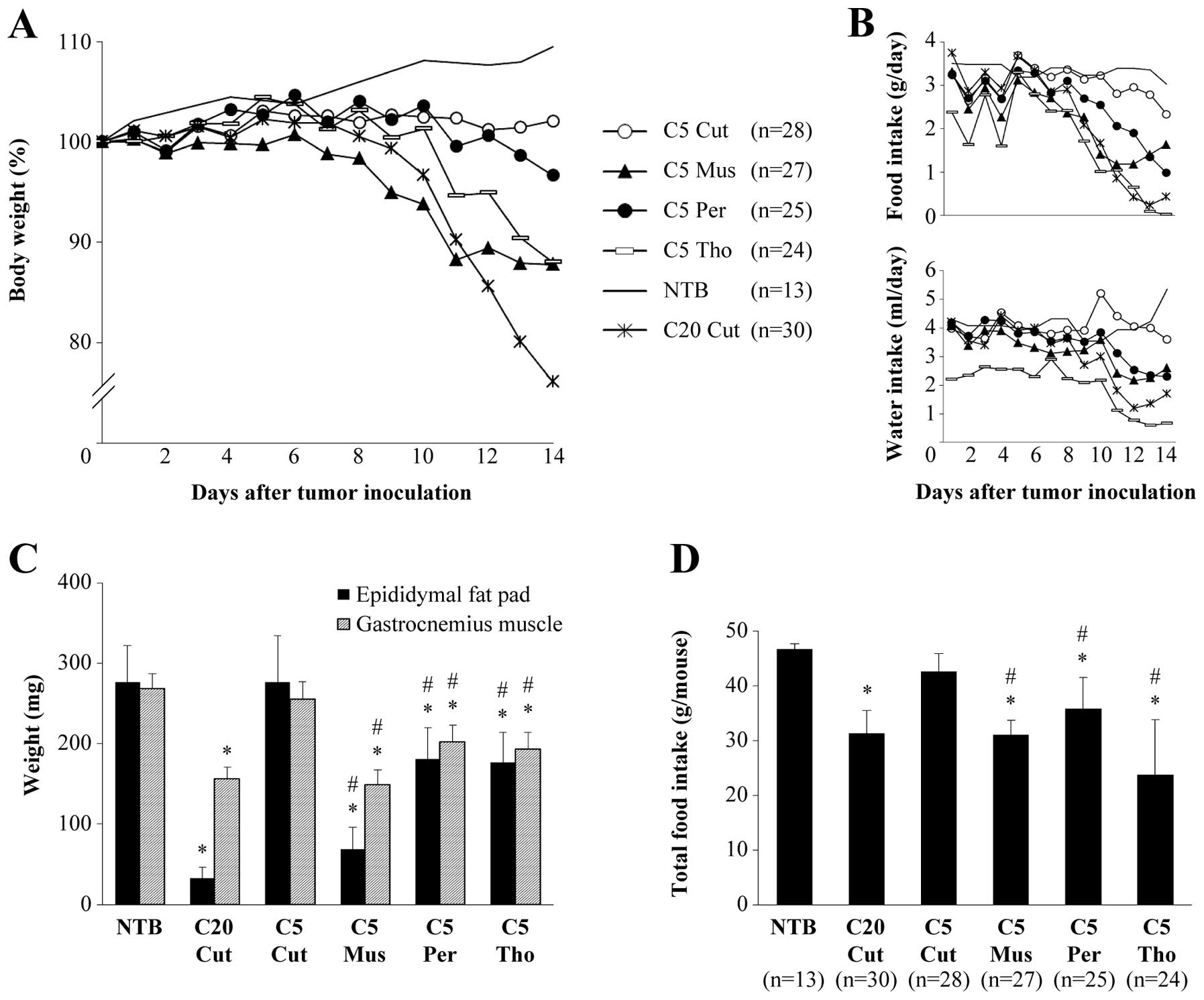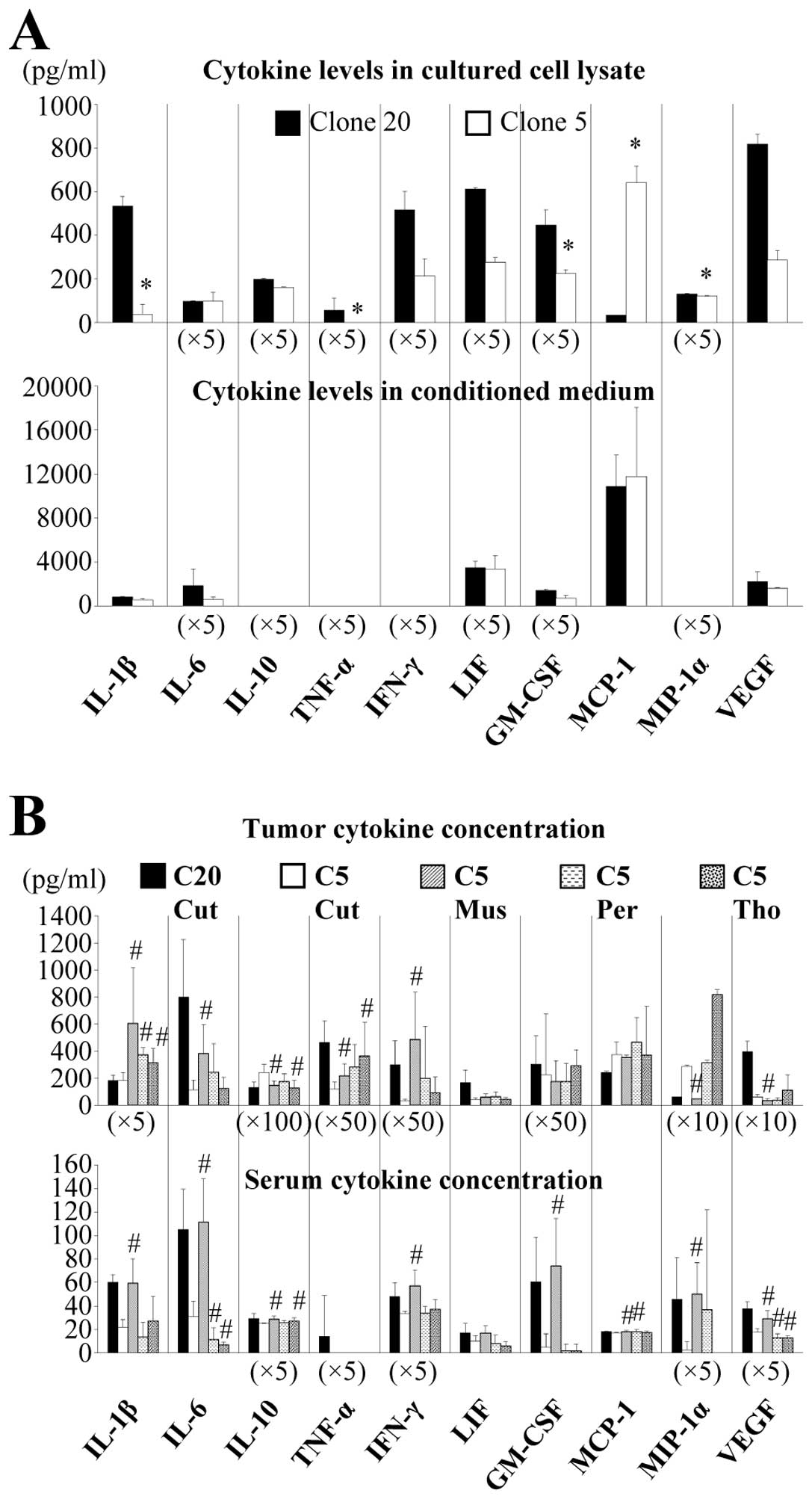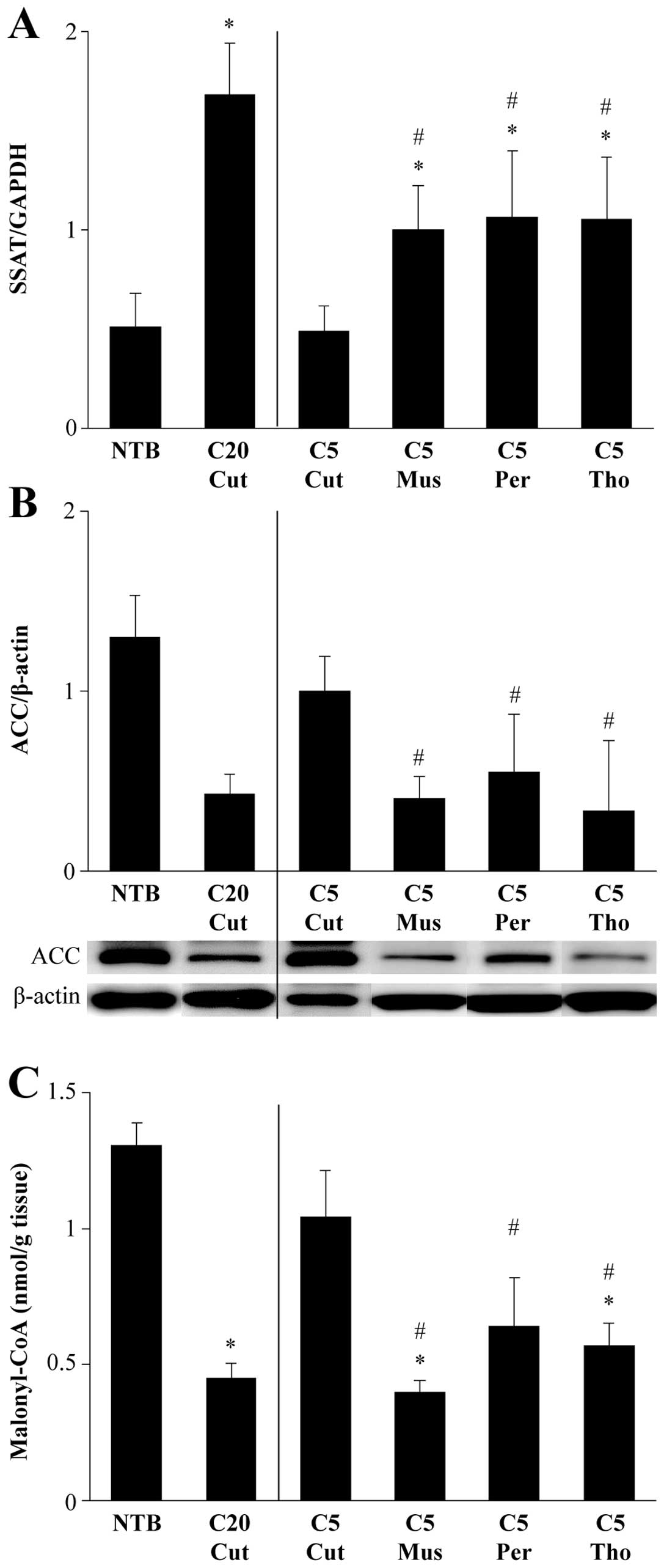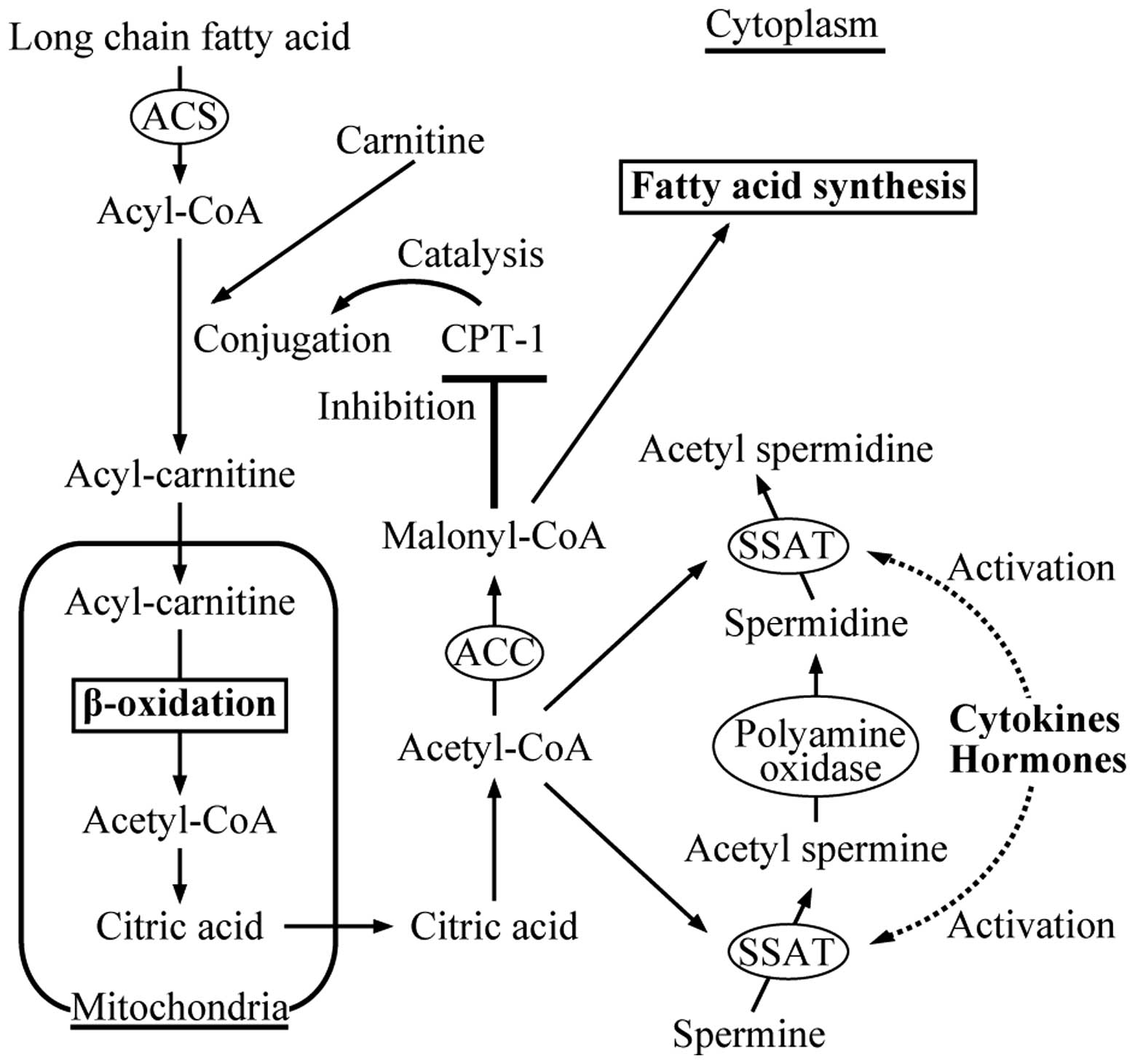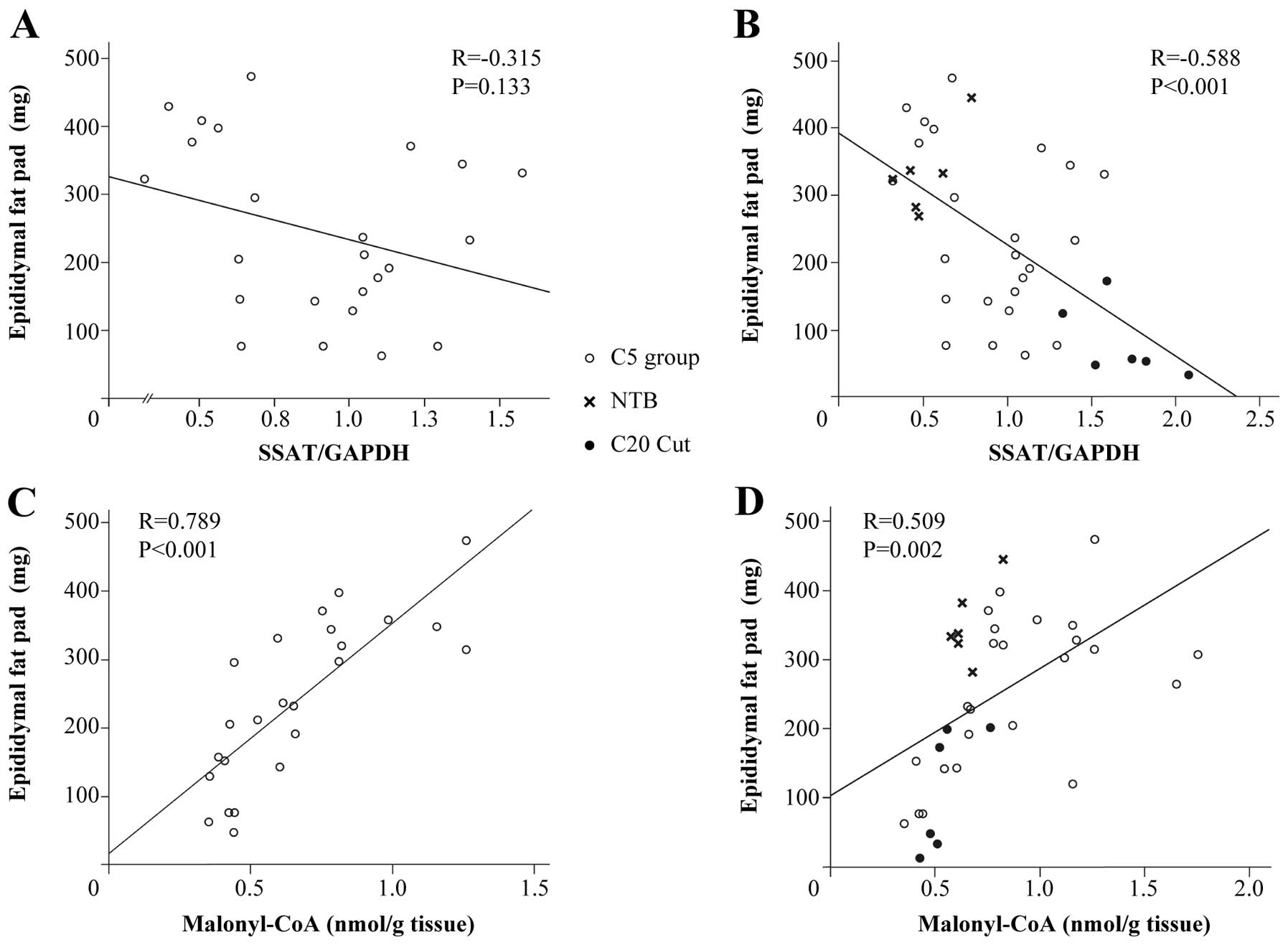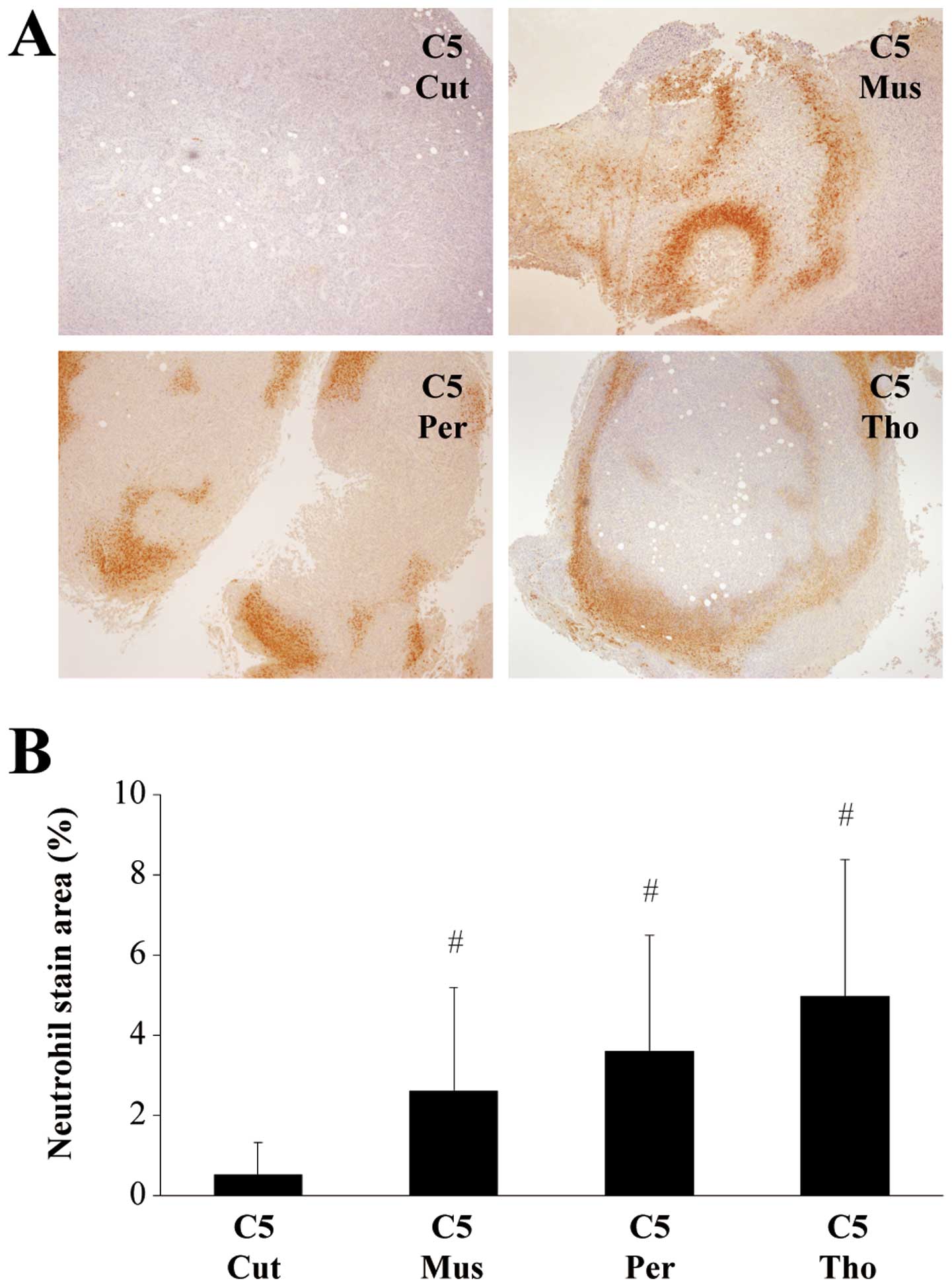|
1.
|
Madeddu C, Maccio A and Mantovani G:
Multitargeted treatment of cancer cachexia. Crit Rev Oncog.
17:305–314. 2012. View Article : Google Scholar : PubMed/NCBI
|
|
2.
|
Honors MA and Kinzig KP: Characterization
of the Yoshida sarcoma: a model of cancer cachexia. Support Care
Cancer. 21:2687–2694. 2013. View Article : Google Scholar : PubMed/NCBI
|
|
3.
|
Dewys WD, Begg C, Lavin PT, et al:
Prognostic effect of weight loss prior to chemotherapy in cancer
patients. Eastern Cooperative Oncology Group. Am J Med. 69:491–497.
1980. View Article : Google Scholar : PubMed/NCBI
|
|
4.
|
Tisdale MJ: Mechanisms of cancer cachexia.
Physiol Rev. 89:381–410. 2009. View Article : Google Scholar : PubMed/NCBI
|
|
5.
|
Fearon KC, Glass DJ and Guttridge DC:
Cancer cachexia: mediators, signaling, and metabolic pathways. Cell
Metab. 16:153–166. 2012. View Article : Google Scholar : PubMed/NCBI
|
|
6.
|
Tisdale MJ: Are tumoral factors
responsible for host tissue wasting in cancer cachexia? Future
Oncol. 6:503–513. 2010. View Article : Google Scholar : PubMed/NCBI
|
|
7.
|
Rebeca R, Bracht L, Noleto GR, et al:
Production of cachexia mediators by Walker 256 cells from ascitic
tumors. Cell Biochem Funct. 26:731–738. 2008. View Article : Google Scholar : PubMed/NCBI
|
|
8.
|
Tisdale MJ: Cachexia in cancer patients.
Nat Rev Cancer. 2:862–871. 2002. View
Article : Google Scholar
|
|
9.
|
Soda K, Kawakami M, Kashii A and Miyata M:
Characterization of mice bearing subclones of colon 26
adenocarcinoma disqualifies interleukin-6 as the sole inducer of
cachexia. Jpn J Cancer Res. 85:1124–1130. 1994. View Article : Google Scholar : PubMed/NCBI
|
|
10.
|
Soda K, Kawakami M, Kashii A and Miyata M:
Manifestations of cancer cachexia induced by colon 26
adenocarcinoma are not fully ascribable to interleukin-6. Int J
Cancer. 62:332–336. 1995. View Article : Google Scholar : PubMed/NCBI
|
|
11.
|
Soda K, Kawakami M, Takagi S, Kashii A and
Miyata M: Splenectomy before tumor inoculation prolongs the
survival time of cachectic mice. Cancer Immunol Immunother.
41:203–209. 1995. View Article : Google Scholar : PubMed/NCBI
|
|
12.
|
Kanzaki M, Soda K, Gin PT, Kai T, Konishi
F and Kawakami M: Erythropoietin attenuates cachectic events and
decreases production of interleukin-6, a cachexia-inducing
cytokine. Cytokine. 32:234–239. 2005. View Article : Google Scholar : PubMed/NCBI
|
|
13.
|
Matsumoto T, Fujimoto-Ouchi K, Tamura S,
Tanaka Y and Ishitsuka H: Tumour inoculation site-dependent
induction of cachexia in mice bearing colon 26 carcinoma. Br J
Cancer. 79:764–769. 1999. View Article : Google Scholar : PubMed/NCBI
|
|
14.
|
Giavazzi R, Campbell DE, Jessup JM, Cleary
K and Fidler IJ: Metastatic behavior of tumor cells isolated from
primary and metastatic human colorectal carcinomas implanted into
different sites in nude mice. Cancer Res. 46:1928–1933.
1986.PubMed/NCBI
|
|
15.
|
Morikawa K, Walker SM, Nakajima M, Pathak
S, Jessup JM and Fidler IJ: Influence of organ environment on the
growth, selection, and metastasis of human colon carcinoma cells in
nude mice. Cancer Res. 48:6863–6871. 1988.PubMed/NCBI
|
|
16.
|
Fujimoto-Ouchi K, Tamura S, Mori K, Tanaka
Y and Ishitsuka H: Establishment and characterization of
cachexia-inducing and -non-inducing clones of murine colon 26
carcinoma. Int J Cancer. 61:522–528. 1995. View Article : Google Scholar : PubMed/NCBI
|
|
17.
|
Tsuchiya H, Sato J, Tsuda H, et al: Serum
amyloid A upsurge precedes standard biomarkers of hepatotoxicity in
ritodrine-injected mice. Toxicology. 305:79–88. 2013. View Article : Google Scholar : PubMed/NCBI
|
|
18.
|
Yamada T, Fukuda T, Wada A and Itoh Y:
Monoclonal antibody-based sensitive enzyme-linked immunosorbent
assay for murine serum amyloid A. J Immunoassay. 20:223–235. 1999.
View Article : Google Scholar : PubMed/NCBI
|
|
19.
|
Celik A, Kano Y, Tsujinaka S, et al:
Decrease in malonyl-CoA and its background metabolic alterations in
murine model of cancer cachexia. Oncol Rep. 21:1105–1111.
2009.PubMed/NCBI
|
|
20.
|
Takamura Y, Kitayama Y, Arakawa A,
Yamanaka S, Tosaki M and Ogawa Y: Malonyl-CoA: acetyl-CoA cycling.
A new micromethod for determination of acyl-CoAs with malonate
decarboxylase. Biochim Biophys Acta. 834:1–7. 1985. View Article : Google Scholar : PubMed/NCBI
|
|
21.
|
Kaczmarek E, Górna A and Majewski P:
Techniques of image analysis for quantitative immunohistochemistry.
Rocz Akad Med Bialymst. 49(Suppl 1): 155–158. 2004.
|
|
22.
|
Ebrahimi B, Tucker SL, Li DH, Abbruzzese
JL and Kurzrock R: Cytokines in pancreatic carcinoma - correlation
with phenotypic characteristics and prognosis. Cancer.
101:2727–2736. 2004.PubMed/NCBI
|
|
23.
|
Shibata M, Nezu T, Takekawa M, et al:
Serum levels of inter-leukin-10 and interleukin-12 in patients with
colorectal cancer. Ann NY Acad Sci. 795:410–412. 1996. View Article : Google Scholar : PubMed/NCBI
|
|
24.
|
Lira FS, Rosa JC, Zanchi NE, et al:
Regulation of inflammation in the adipose tissue in cancer
cachexia: effect of exercise. Cell Biochem Funct. 27:71–75. 2009.
View Article : Google Scholar : PubMed/NCBI
|
|
25.
|
Strassmann G, Fong M, Kenney JS and Jacob
CO: Evidence for the involvement of interleukin 6 in experimental
cancer cachexia. J Clin Invest. 89:1681–1684. 1992. View Article : Google Scholar : PubMed/NCBI
|
|
26.
|
Greenberg AS, Nordan RP, McIntosh J, Calvo
JC, Scow RO and Jablons D: Interleukin 6 reduces lipoprotein lipase
activity in adipose tissue of mice in vivo and in 3T3-L1
adipocytes: a possible role for interleukin 6 in cancer cachexia.
Cancer Res. 52:4113–4116. 1992.PubMed/NCBI
|
|
27.
|
Johnen H, Lin S, Kuffner T, et al:
Tumor-induced anorexia and weight loss are mediated by the TGF-beta
superfamily cytokine MIC-1. Nat Med. 13:1333–1340. 2007. View Article : Google Scholar : PubMed/NCBI
|
|
28.
|
Harwood HJ: Treating the metabolic
syndrome: acetyl-CoA carboxylase inhibition. Expert Opin Ther
Targets. 9:267–281. 2005. View Article : Google Scholar : PubMed/NCBI
|
|
29.
|
McGarry JD and Brown NF: The mitochondrial
carnitine palmitoyltransferase system. From concept to molecular
analysis. Eur J Biochem. 244:1–14. 1997. View Article : Google Scholar : PubMed/NCBI
|
|
30.
|
Foster DW: The role of the carnitine
system in human metabolism. Ann NY Acad Sci. 1033:1–16. 2004.
View Article : Google Scholar : PubMed/NCBI
|
|
31.
|
Jell J, Merali S, Hensen ML, et al:
Genetically altered expression of spermidine/spermine
N1-acetyltransferase affects fat metabolism in mice via acetyl-CoA.
J Biol Chem. 282:8404–8413. 2007. View Article : Google Scholar : PubMed/NCBI
|
|
32.
|
Casero RA and Pegg AE: Spermidine/spermine
N1-acetyltransferase - the turning point in polyamine metabolism.
FASEB J. 7:653–661. 1993.PubMed/NCBI
|
|
33.
|
Desiderio MA, Pogliaghi G and Dansi P:
Regulation of spermi-dine/spermine N1-acetyltransferase expression
by cytokines and polyamines in human hepatocarcinoma cells (HepG2).
J Cell Physiol. 174:125–134. 1998. View Article : Google Scholar : PubMed/NCBI
|
|
34.
|
Green ML, Chung TE, Reed KL, et al:
Paracrine inducers of uterine endometrial spermidine/spermine
N1-acetyltransferase gene expression during early pregnancy in the
pig. Biol Reprod. 59:1251–1258. 1998. View Article : Google Scholar : PubMed/NCBI
|
|
35.
|
Rodriguez-Sallaberry C, Simmen FA and
Simmen RC: Polyamine- and insulin-like growth factor-I-mediated
proliferation of porcine uterine endometrial cells: a potential
role for spermidine/spermine N(1)-acetyltransferase during
periimplantation. Biol Reprod. 65:587–594. 2001. View Article : Google Scholar
|
|
36.
|
Huang YL and Taylor MW: Induction of
spermidine/spermine N1-acetyltransferase by interferon type I in
cells of hematopoietic origin. J Interferon Cytokine Res.
18:337–344. 1998. View Article : Google Scholar : PubMed/NCBI
|
|
37.
|
Babbar N, Hacker A, Huang Y and Casero RA:
Tumor necrosis factor alpha induces spermidine/spermine
N-1-acetyltransferase through nuclear factor kappa B in non-small
cell lung cancer cells. J Biol Chem. 281:24182–24192. 2006.
View Article : Google Scholar
|
|
38.
|
McMillan DC: Systemic inflammation,
nutritional status and survival in patients with cancer. Curr Opin
Clin Nutr Metab Care. 12:223–226. 2009. View Article : Google Scholar : PubMed/NCBI
|
|
39.
|
McMillan DC: The systemic
inflammation-based Glasgow Prognostic Score: a decade of experience
in patients with cancer. Cancer Treat Rev. 39:534–540. 2013.
View Article : Google Scholar : PubMed/NCBI
|
|
40.
|
Zahorec R: Ratio of neutrophil to
lymphocyte counts - rapid and simple parameter of systemic
inflammation and stress in critically ill. Bratisl Lek Listy.
102:5–14. 2001.PubMed/NCBI
|
|
41.
|
Donskov F: Immunomonitoring and prognostic
relevance of neutrophils in clinical trials. Semin Cancer Biol.
23:200–207. 2013. View Article : Google Scholar : PubMed/NCBI
|
|
42.
|
Dumitru CA, Moses K, Trellakis S, Lang S
and Brandau S: Neutrophils and granulocytic myeloid-derived
suppressor cells: immunophenotyping, cell biology and clinical
relevance in human oncology. Cancer Immunol Immunother.
61:1155–1167. 2012. View Article : Google Scholar : PubMed/NCBI
|















